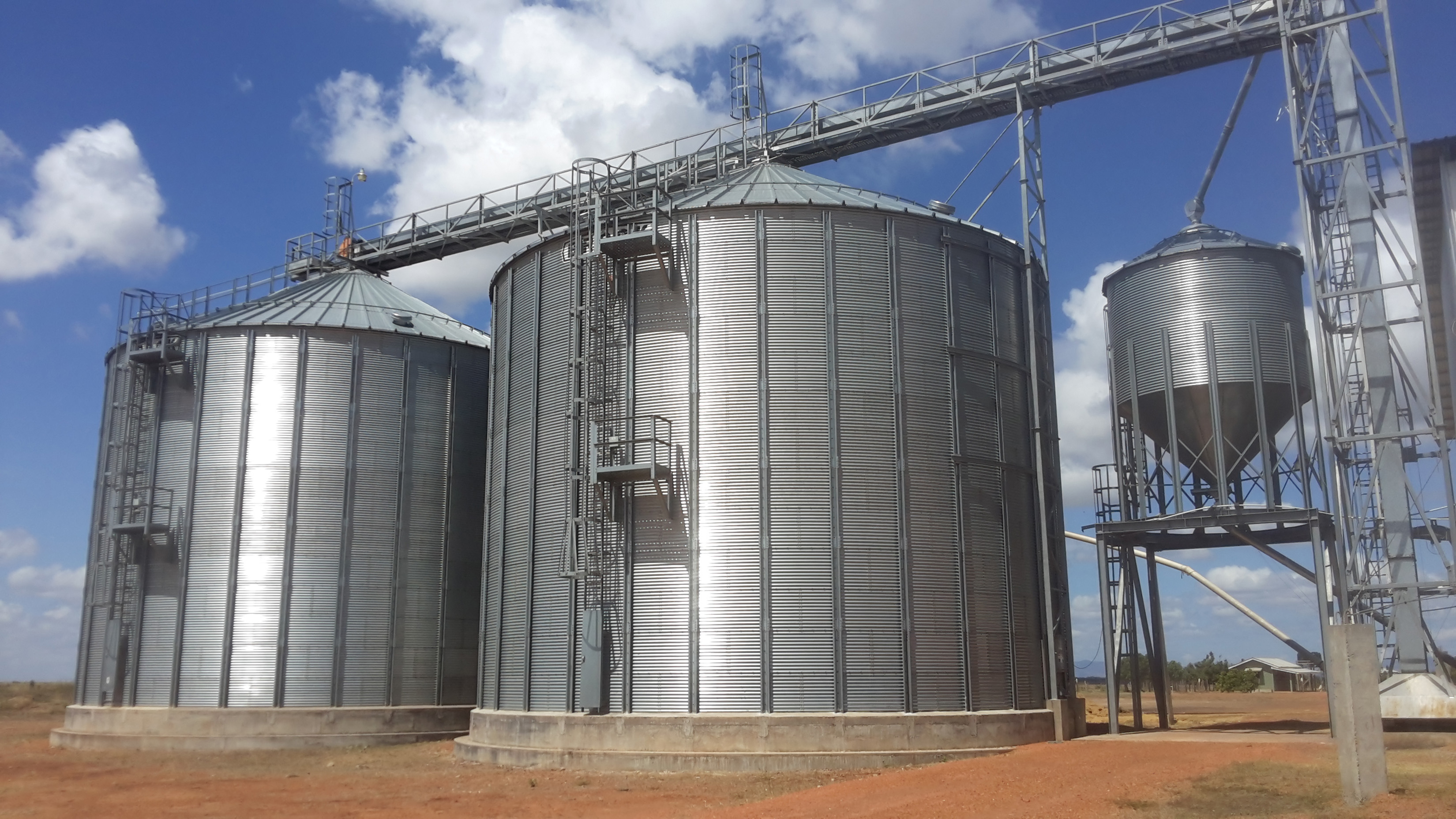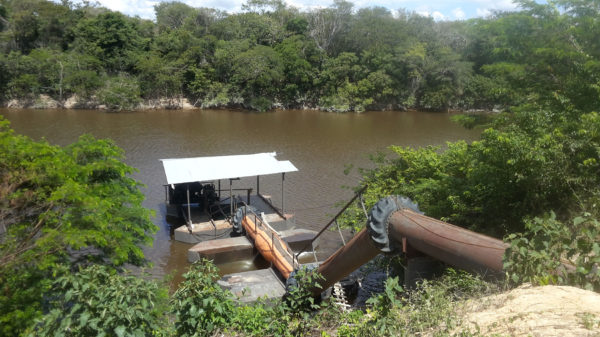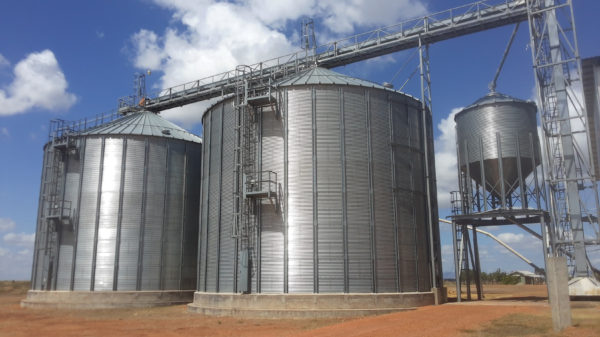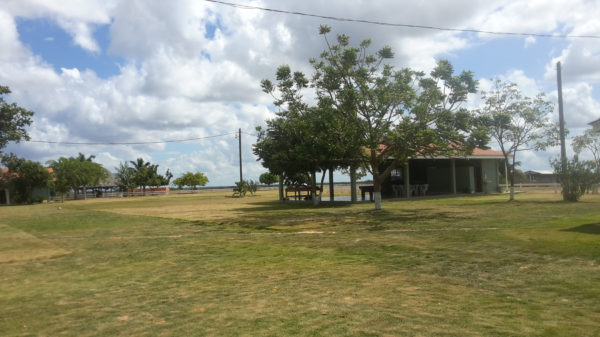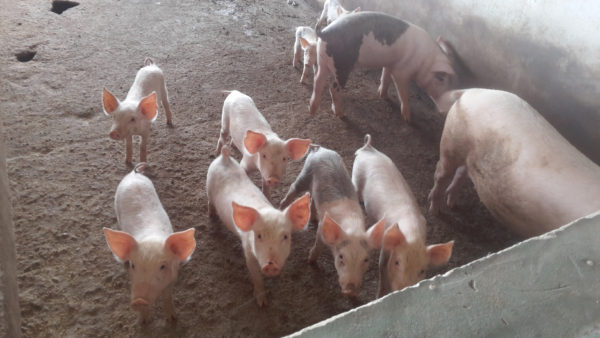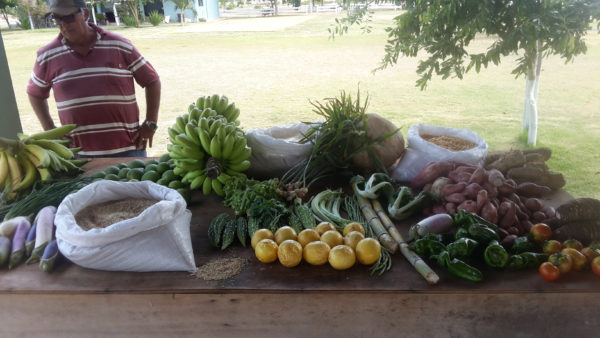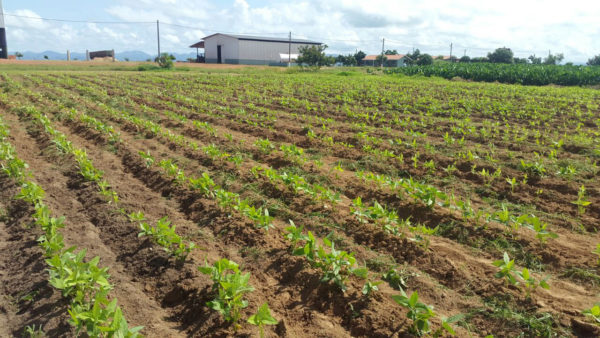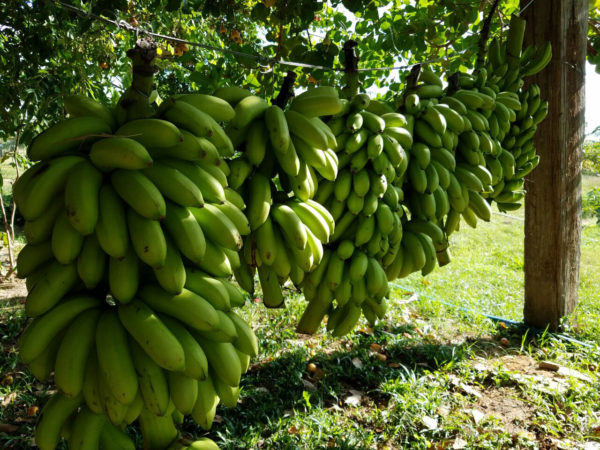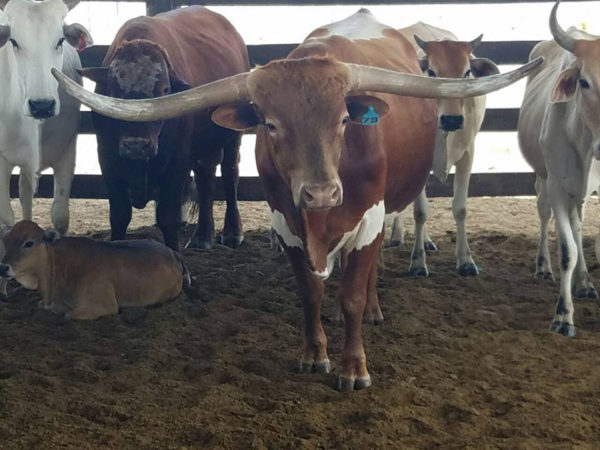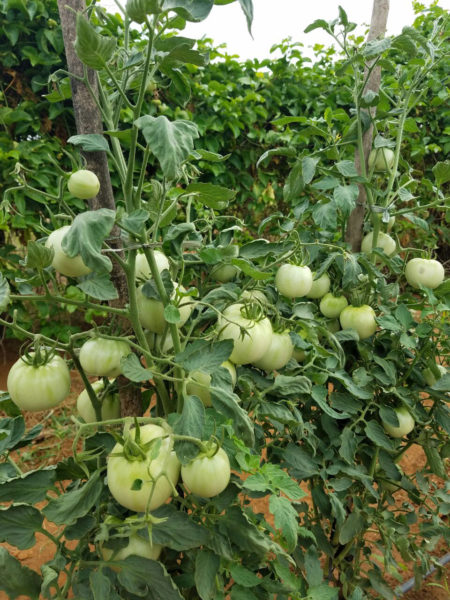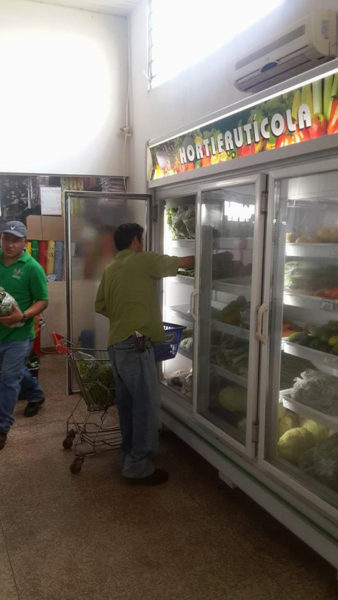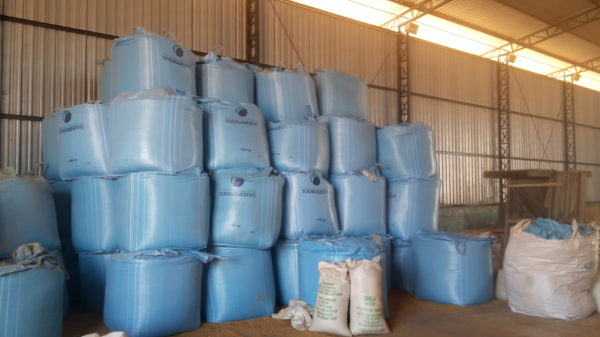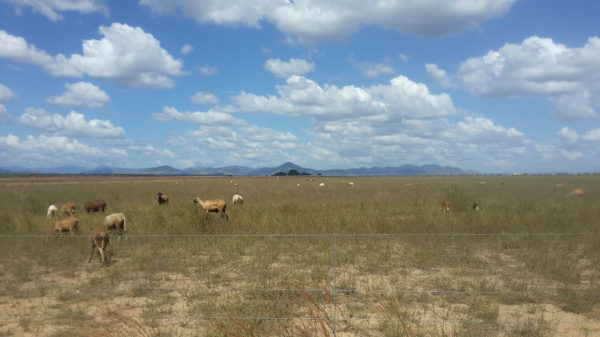After six years and an investment of over $1.3B to date, the Santa Fe mega farm in Region 9 is waiting on government’s go ahead for an additional 20,000 acres of land to begin cattle rearing in early 2017, thus completing the first phase of the project.
“Early next year we are looking to complete an agreement with government for the lease of another 20,000 acres of land as we keep pushing aggressively ahead,” Director of Santa Fe Farms, Richard Vasconcellos told Stabroek News in an interview on Saturday on the farm.
Further, he added “We are really moving now. We have done our rice, we are comfortable with our yields and we are now going into our cattle programme aggressively. We are also looking to bring in some black belly rams from Barbados as we continue with our sheep programme…and that would complete phase one.
Over the weekend, Stabroek News visited the 29,000 acres mega farm, located at Santa Fe, Rupununi, in Region 9 and had a firsthand tour of the operations there.
The project, founded by prominent Barbadian investor, Sir Kyffin Simpson, who owns the Interamerica Trading Corporation that is responsible for the investment at Santa Fe, has seen the transformation of 29,000 acres of land that many had bypassed and called barren, now producing myriad crops, including rice for export to neighbouring Brazil.
Its director says that no profit has yet been turned from the project but that was catered for from the inception given that agriculture schemes are capital intensive and returns are not seen until years after.
During a visit this year with Prime Minister of Barbados, Freundel Stuart, Guyana’s President David Granger hailed the Santa Fe mega farm as “a reaffirmation of the bond between Guyana and the Caribbean, more so Barbados.” He underscored the point that government remains committed to the development of the Rupununi and the Santa Fe Farm represents a model of what is possible with further foreign and local direct investment in the sector, even as opportunities are explored to support small and medium scale farmers.
With government also promising the region a new abattoir in 2017, Santa Fe Farms officials are moving to simultaneously acquire the lands needed and complete the first phase of a proposed three-phase agricultural development project with cattle rearing.
‘Cattle herding’
Vasconcellos explained future plans as it pertains to cattle herding. He said, “We have always modelled as a large scale integrated farm. We are in phase one and we are moving aggressively towards cattle which would complete that phase. We have completed our studies and … it has been determined that we would need grazing land. Unfortunately the grazing lands where Santa Fe is located is not of the best quality. So as a consequence to that, one would require expansive grazing lands. Of course there is situations for pasture enhancement, but in our business model, pasture enhancement is very costly. You see, to plant certain types of grass to improve the pasture, our business model would not allow us that.”
“We are looking forward to the new abattoir. The government has indicated that Lethem would be getting again its own new abattoir and we are excited for that. But of course, it would take a couple of years before we can get to a size of herd, to that point, where we can supply it. Nonetheless, we are moving towards that and are hoping to be if not the main supplier then one of the main suppliers,” he added.
Back in 2010, the government signed a memorandum of understanding (MOU) with ITC Barbados for the development of a large scale integrated agricultural crops and livestock project. Phase one called for the lease of 100,000 acres of land to the investor with a minimum investment of US$5M.
Santa Fe’s Director says that it will not rush to have the total 100,000 acres of land as per the agreement right now, as it sees its development in stages and does not want to take on more that it “can chew” right now but plans to work the additional 20,000 acres “and then go from there”.
“A comprehensive plan for the further development of our cattle programme was done by King Ranch Institute of Texas in the United States. This plan required additional grazing pastures for the cattle programme…Acquiring the 20,000 acres contiguous to the existing leased lands will allow for a significant expansion of the cattle programme that is necessary to get us up to scale,” Santa Fe’s Director noted.
They are confident about acquiring the lease and have already started investing in bulls, cows and horses.
A section of the current farm is fenced off and cows and bulls could be seen grazing or resting.
Farm manager Ramdat Persram informed that the company had purchased two longhorn and Bradford bulls respectively from the United States and they have since bred. Additionally, two Arabian colts were also imported from the USA to the farm for breeding. They will add to Santa Fe’s existing herd of horses.
Other livestock at Santa Fe includes about 100 pigs, 250 sheep and countless ducks and chickens. Many friendly dogs also roam the farm.
Rice to Brazil
While there is much focus on getting the cattle programme to its designed state, Vasconcellos was quick to point out that equal attention is given to the core of the Santa Fe venture, rice and other crops.
Currently, over 8,000 acres of land has been prepared for rice cultivation which saw in 2013 the production of in excess of 10,000 tons of paddy with 7,000 tonnes of paddy and cargo rice exported to Brazil.
The rice is milled at the farm which boasts its own dryer and silos. Nothing is wasted as the bran from the milling is also used as a fertilizer for the farmlands.
According to Vasconcellos, if Sir Kyffin had listened to naysayers and skeptics of the Region 9 lands, today’s billion-dollar mega farm would not be a reality. He said that an apparent hindrance was the non-availability of water to irrigate lands that were arid for most of the year. He explained that a huge chunk of the investment monies went into ensuring that water was readily available.
That meant tapping into the Ireng River which forms the border between Guyana and Brazil. A water lifting irrigation system is used to convey water directly from the Ireng River to the fields and to the farms and has so far proved a viable move.
Two irrigation pumps are installed on floating platforms at two locations on the Ireng River. It was explained by Chief Engineer Chris Moses that the pumps have a water flow rate of about 1200 litres per second which is distributed through a hosing system throughout the farm.
The project has modelled its cultivation on techniques used in Brazil as well as in Guyana and utilizes a Brazilian expert, Agimon Da Costa, to guide the process.
Because the soil type is a low fertile, acidic kind, after reaping of a crop of paddy, the lands are left for about one year to a year and a half before being tended to again.
Another setback has been Guyana’s current bilateral trade pact-Partial Scope Agreement -with Brazil which among other exports limits the amount of rice that can be exported to that country. Santa Fe is hoping that given the changing trade dynamics in the region and the demand for more rice by Brazil that the agreement will be revised sometime in the future thus enabling Guyana to export more of that commodity.
“We operate in an environment where our operating expenses are higher for example, cultivating rice as compared to on the coast. We bring fuel from Georgetown trucking it through here so we have those challenges. Getting it to markets also, because you have seen the roads and when it rains it is worse. But despite all of that, we have tremendous success. For the first time, we are seeing paddy rice going to Brazil. It goes under the Partial Scope Agreement and there are some limitations to how much can go,” Vasconcellos related.
“We would hope as time goes along that amount can be increased so that more rice can go from Guyana to Brazil. Recently we have seen Brazilians going to Georgetown and bringing rice through the trail. The government will most likely renegotiate and we are hoping that can happen so that more rice can go into Brazil under the Partial Scope Agreement. We are operating with the quantities allowed but as we get bigger we will need to have more to send into Brazil,” he added.
‘Non -traditional crops’
In addition to the many acres of fruits and vegetables, Santa Fe Farm has also tested non-traditional crops here including a variety of bell peppers and soya and other beans. All crops so far have shown significant promise with acreage now set aside also for planting soya.
The farm’s manager explained that a pilot test was also conducted on the growing of Irish potatoes at the farm and it found that the tuber can grow in the region as it has before. As such arrangements are being made to plant Irish potatoes for a Canadian company with details of the agreement to be made public soon.
While the farm is eager to venture into the cultivation of non-traditional crops, it has made a calculated decision to stop farming cassava as it is a main crop of villagers in the region. “We had started cassava but did not want direct competition with the locals because it is what they use here as their staple. We are here to develop Region 9 and could not go into competition with the local farmers. Santa Fe has this region at heart and it is why we would have invested heavily here…you can ask the locals yourself,” Vasconcellos said.
Produce from the farm supplies Region 9 with many of the local shops and stores proudly informing that their lettuce, watermelon, bananas, pak choy or eggplant among other produce, “comes directly from Santa Fe”.
Employment at the farm is predominantly local as of the 25 daily workers, 23 are from villages in Region 9 and when it is reaping season, those numbers are doubled.
